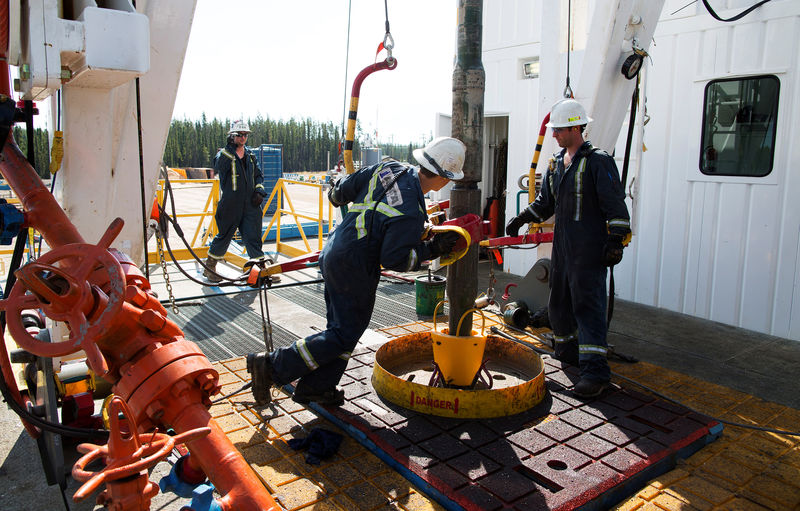By Gina Lee
Investing.com – Oil was up Friday morning in Asia, retaining its gains from the previous session after a disagreement within the Organization of the Petroleum Exporting Countries and allies (OPEC+) delayed a decision on output levels, which might cause an inflationary spike in prices if not resolved.
Brent oil futures were up 0.30% to $76.07 by 10:48 PM ET (2:48 AM GMT) and WTI futures gained 0.36% to $75.50.
The United Arab Emirates blocked a deal at the last minute, causing the alliance to put off its decision on monthly production. The standstill could end with OPEC+ not increasing output at all, which means the alliance would fall back on previous terms that asked for production to remain unchanged until April 2022.
Before the disagreement, OPEC+ appeared to agree in principle to boost output by 400,000 barrels a day each month from August through December. The OPEC+ ministers will regroup on Friday as the current outcome leaves the market in limbo and tarnishes the alliance's reputation, following last year’s Saudi Arabian-Russian price war.
If OPEC+ can’t resolve the conflict, the possibility of crude surging higher will add to growing inflationary pressures in the global economy. Oil just finished its best half since 2009 as the rebound in energy demand in major economies outpaced the supply response. In a note, Citigroup Inc. (NYSE:C) analysts stated that before the standoff, it expects the market to remain in a deep deficit this quarter even after accounting for rising output from OPEC+.
“Another OPEC+ implosion like last April is unlikely,” Vandana Hari, founder of oil consultancy Vanda (NASDAQ:VNDA) Insights, told Bloomberg. “They have worked too hard over the past year to ditch the pact in a huff at this stage. I expect the tentative deal between Saudi Arabia and Russia to go through, but some sort of concession may be made to the UAE.”
Along the oil futures curve, the market structure grew stronger and timespreads slid deeper into backwardation. On Thursday, the three nearest timespreads on the WTI curve hit $1 a barrel. This means that the market is growing increasingly worried about supply tightness, particularly at the key storage hub of Cushing, Oklahoma, where U.S. crude futures are priced. Brent’s September contract was 90 cents a barrel more expensive than the October one, compared with 80 cents a week ago.
The UAE stated it would only give its support to a deal if the baseline for its own cuts was raised considerably, according to delegates. The country’s reductions are measured from a starting point in 2018, which set its maximum capacity at 3.168 million barrels a day. However, expansion projects have since raised that number to about 4 million barrels a day. Reflecting that new capacity in its baseline could allow it to pump hundreds of thousands of barrels a day of extra crude.
Observers believe OPEC+ is likely to agree on Friday to restore more production. “We would expect a 400,000 barrels a day increase per month through the rest of this year just to keep the markets balanced,” Neil Beveridge, a senior analyst at Sanford C Bernstein in Hong Kong, told Bloomberg. Brent is likely to exceed $80 a barrel soon, he added.
